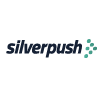Programmatic Advertising Trends You Should Be Aware of in 2023
Third-party cookie reduction has prompted some significant issues regarding the future of programmable systems, which have grown fast over the previous two decades.
While programmatic advertising is evolving, it will continue to play an important part in digital marketing.
US marketers’ programmatic ad expenditure reached $106 billion in 2021, a 41% increase year on year, according to eMarketer, with this figure expected to grow to $123.2 billion this year.
Let’s take a look at which programmatic advertising trends are likely to take off this year.
1. Internal Programmatic Campaigns
Ten years ago, just a handful of firms controlled their programmatic ad buying. Today, however, the situation is very different. According to the Interactive Advertising Bureau’s (IAB) analysis of the worldwide programmatic industry in 2020, more than two-thirds (69%) of marketing businesses have either totally or partially taken their programmatic campaigns in-house.
2. Cookie Expiration and Third-Party Data Solutions
Marketing without third-party data is on the horizon, which means that the programmatic advertising process will need to devise reliable solutions.
New privacy regulations, such as Europe’s General Data Protection Regulation (GDPR) and California’s 2018 Privacy Act, have made it more difficult to target and alter advertising based on online user activity.
3. Development of Connected TV (CTV)
According to Statista, connected TV (CTV) programmatic display ad expenditure in the United States is expected to increase to $8.88 billion in 2022 from an anticipated $6.93 billion in 2021. Because of the COVID-19 epidemic, more consumers than ever before are paying for over-the-top (OTT) video services like YouTube TV, Apple TV+, and Netflix, leading to a 41.2% rise in US streaming income in 2020.
4. Development of Digital Out-of-Home (DOOH) Advertising
Following a challenging few years for the medium as a result of government-mandated stay-at-home orders in reaction to the pandemic, marketing professionals are seeking fresh ways to reach clients who are again on the move, and DOOH is resurgent.
5. The Rise of White-Label Software
White-label software is a generic piece of software that is produced and offered to businesses as a service. Businesses can purchase access to a white-label advertising platform in order to have administrator-level control over their ad campaigns. This not only gives businesses more control over their campaigns but also makes the ad-buying process more transparent. This is consistent with the IAB analysis, which indicated that corporations are increasingly trying to in-house their marketing initiatives.
6. Contextual Advertising
Contextual targeting is a very simple way of advertising. However, considering the aforementioned demise of cookies, it is still one of the programmatic trends to keep an eye on. Given that adverts are displayed based on the context of the website rather than a user’s online behavioral data, the value of contextual targeting in digital advertising is only going to expand.
Last Words
Marketers may use programmatic advertising to direct their campaigns more effectively across targeted channels. They may employ automated methods to assist them to access the most coveted markets and demographics, while also discovering new opportunities utilizing fresh data.
If your company isn’t currently using programmatic advertisements in some way, you’re passing up an opportunity to save money while improving the results of your online advertising efforts.
